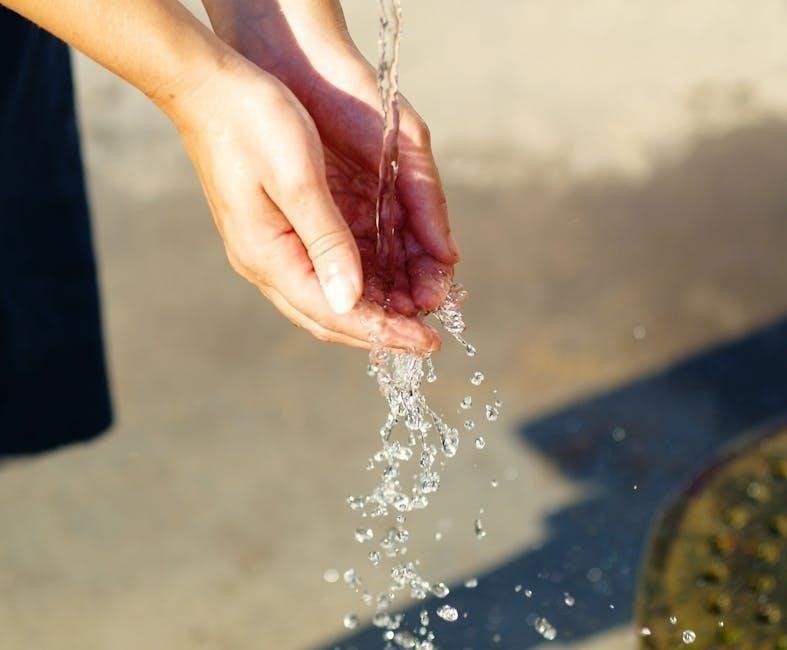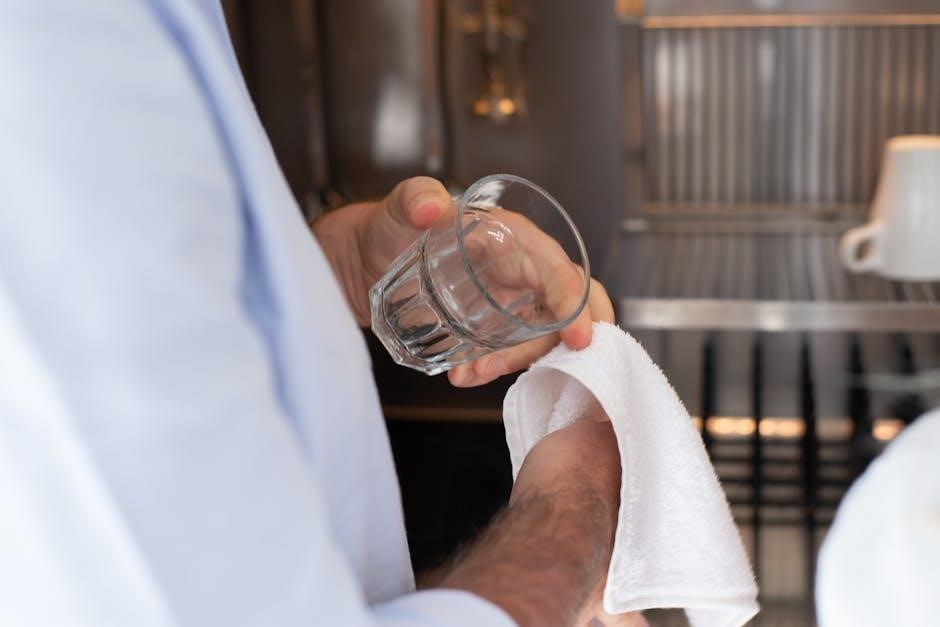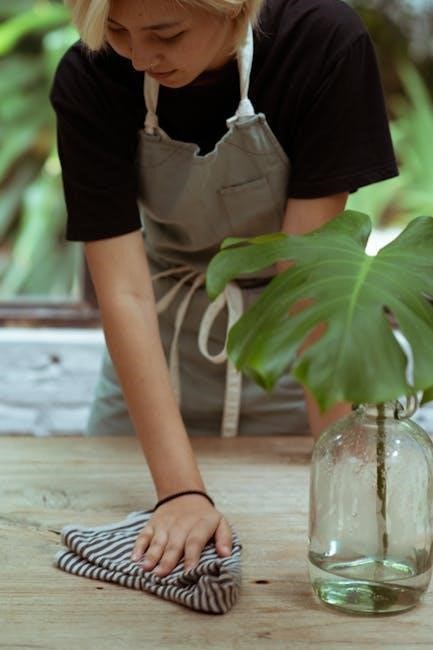Ortho Glass Splinting, detailed in the Ortho Glass Splinting Manual PDF, is a modern orthopedic method using synthetic materials for immobilization, emphasizing the R-I-C-E principle and manufacturer guidelines.
1.1 Overview of Ortho Glass Splinting
Ortho Glass Splinting is a modern, efficient method for immobilizing injuries, utilizing synthetic materials like ORTHO-GLASS for superior comfort and durability. It combines malleable aluminum with synthetic options, offering versatility in application. Designed for various injuries, this technique ensures proper alignment and support, reducing swelling and promoting healing. The Ortho Glass Splinting Manual PDF provides detailed guidance on materials, techniques, and best practices, making it a valuable resource for clinicians and practitioners seeking effective, patient-centered solutions.
1.2 Importance of Splinting in Orthopedics
Splinting plays a critical role in orthopedics by providing immobilization, reducing pain, and promoting healing. The Ortho Glass Splinting Manual PDF emphasizes proper techniques to ensure effective support. It aligns with orthopedic principles, including the R-I-C-E method, to minimize swelling and protect injuries. Splinting is essential for fracture management, soft tissue injuries, and post-operative care, ensuring optimal recovery. The use of materials like Ortho Glass offers a lightweight, durable solution, enhancing patient comfort and clinical outcomes in various orthopedic scenarios.
Key Concepts in the Ortho Glass Splinting Manual
The manual highlights synthetic splinting materials like malleable aluminum and fiberglass, with ORTHO-GLASS Comfort offering a progressive solution for immobilization, blending durability and patient comfort effectively.
2.1 Synthetic Splinting Materials
Synthetic splinting materials, like ORTHO-GLASS Comfort, are widely used for their durability and ease of application. These materials, such as fiberglass and malleable aluminum, provide excellent support and immobilization. They are often preferred over traditional casts due to their lightweight and customizable features. The Ortho Glass Splinting Manual PDF highlights their progressive splinting solutions, offering enhanced patient comfort and faster recovery times. Proper application techniques ensure optimal results, making synthetic materials a cornerstone in modern orthopedic care.
2.2 ORTHO-GLASS Comfort: A Progressive Splinting Solution
ORTHO-GLASS Comfort represents a significant advancement in synthetic splinting, offering a lightweight and durable solution. It features a 3D knit design, enhancing flexibility and patient comfort. This progressive system allows for customizable profiles, addressing diverse patient needs. Its unique material properties ensure optimal immobilization while maintaining ease of application. ORTHO-GLASS Comfort is designed to reduce swelling and promote healing, making it a preferred choice for clinicians seeking efficient and patient-centric splinting solutions. Its adaptability ensures superior outcomes in various orthopedic scenarios.
Application Techniques
Apply stockinette extending 2 beyond the splinting material. Use 2-3 layers of padding over the area and between digits. Lightly moisten before wrapping and anchoring.
3.1 Preparing the Area for Splinting
Preparing the area for splinting involves cleaning the skin and removing any lotions or oils to ensure proper adhesion. Apply the stockinette, extending it 2 inches beyond the splinting material. Next, add 2-3 layers of padding over the area to be splinted, including between digits and bony prominences. Lightly moisten the padding to enhance conformity. Ensure the area is dry and free of debris before proceeding. Follow the Ortho Glass Splinting Manual PDF guidelines for optimal preparation and material application.
3.2 Applying Stockinette and Padding
Apply the stockinette to extend 2 inches beyond the splinting material for proper coverage. Next, add 2-3 layers of padding over the area to be splinted and between digits. Extra padding (2-3 layers) should be applied over bony prominences to ensure comfort and prevent pressure sores. Lightly moisten the padding to enhance contouring. This step ensures even distribution of pressure and protects the skin during the immobilization process, aligning with the guidelines in the Ortho Glass Splinting Manual PDF.
3.3 Wrapping and Anchoring the Splint
After applying the stockinette and padding, wrap the splint material snugly around the injured area. Ensure proper alignment and coverage, extending beyond the injury site for stability. Use a bandage or tape to anchor the splint securely, especially at the wrist for thumb splints. For optimal support, apply additional layers of padding over bony prominences and between digits. Lightly moisten the material for a precise fit. Finally, lift the limb to reduce swelling and ensure proper positioning before the splint sets completely.

Specific Splinting Techniques
The volar splint positions the wrist at neutral to 20 degrees, while the thumb splint wraps from the web space around the thumb, anchoring at the wrist.
4.1 Volar Splint: Positioning and Application
The volar splint is applied with the wrist positioned in a neutral to slightly flexed position, ensuring proper alignment of the forearm and hand. Stockinette and padding are applied first, extending beyond the injury site. The splint material is then molded to the palmar surface, ensuring support and immobilization. Wrapping begins at the distal end, progressing proximally, and is anchored securely at the wrist with a bandage. Proper positioning and application are critical to prevent complications and ensure optimal healing.
4.2 Thumb Splint: Web Space and Thumb Wrapping
For a thumb splint, start by wrapping the web space, ensuring proper alignment to avoid discomfort. Extend the splint around the thumb, securing it firmly. Anchor the splint at the wrist using a bandage for stability. Apply 2-3 layers of padding over bony prominences and between digits to prevent pressure sores. Proper positioning is key to maintain thumb mobility while immobilizing the injured area. Follow the Ortho Glass Splinting Manual PDF guidelines for accurate application.
Post-Splinting Care
Post-splinting care involves patient discharge instructions, emphasizing the R-I-C-E principle: Rest, Ice, Compression, and Elevation. Monitor swelling and ensure proper limb positioning for optimal recovery.
5.1 Patient Discharge Instructions
Patient discharge instructions emphasize the R-I-C-E principle: Rest, Ice, Compression, and Elevation. Instruct patients to avoid weight-bearing and monitor for swelling or discomfort. Advise elevating the injured limb above heart level to reduce swelling. Provide clear guidelines for splint care, including avoiding water exposure and refraining from removing the splint. Schedule follow-up appointments for removal and further assessment. Ensure patients understand the importance of adhering to these instructions for optimal recovery.
5.2 R-I-C-E Principle: Rest, Ice, Compression, Elevation
The R-I-C-E principle is essential for post-splinting care, aiding in swelling reduction and pain management. Rest the injured area to avoid further strain. Apply ice for 15-20 minutes, repeated every 1-2 hours, to minimize inflammation. Use compression bandages to stabilize the limb and reduce edema. Elevate the affected area above heart level to promote blood flow and reduce swelling. Adherence to these steps enhances recovery and prevents complications, as outlined in the Ortho Glass Splinting Manual PDF.
Manufacturer Guidelines
Adhere to manufacturer instructions for Ortho Glass Splinting, ensuring proper setting times of 20-25 minutes, and follow specific care instructions for optimal results and patient safety.
6.1 Following Clinician Instructions
Adhering to clinician instructions is crucial for proper splinting. The Ortho Glass Splinting Manual PDF emphasizes following specific guidelines for injury assessment and application techniques. Clinicians provide detailed instructions to ensure optimal immobilization and recovery. The splint setting time, typically 20-25 minutes, must be respected. Patient discharge instructions should include R-I-C-E principles and proper care. Manufacturer guidelines also stress the importance of adhering to specific protocols for varying injury types and patient needs. Compliance ensures effective immobilization and promotes healing.
6.2 Setting Time of the Splint
The Ortho Glass Splinting Manual PDF specifies that the splint typically sets within 20-25 minutes. Environmental conditions, such as temperature and humidity, may influence this timeframe. Proper positioning during the setting process is crucial to ensure optimal immobilization. Clinicians should follow manufacturer guidelines to avoid delays or incomplete hardening. Monitoring the splint during the setting phase ensures patient safety and effectiveness of treatment, aligning with the principles outlined in the manual for precise application and care. Timely setting ensures proper support and promotes healing efficiency.

Advanced Features of Ortho Glass Splinting
Ortho Glass Splinting includes advanced features like facial recognition, gesture control, and customizable profiles, enhancing patient care and splinting efficiency as detailed in the manual.
7.1 Facial Recognition and Gesture Control
The Ortho Glass Splinting Manual PDF highlights advanced features like facial recognition and gesture control, enhancing user interaction. These technologies allow clinicians to customize splinting profiles and monitor patient progress remotely. Gesture control streamlines the application process, reducing preparation time while ensuring precision. Facial recognition enables personalized settings, improving patient comfort and outcomes. These innovations make the system more intuitive and adaptable to individual needs, setting a new standard in orthopedic care and splinting efficiency.
7.2 Customizable Profiles for Patient Needs
Customizable profiles in Ortho Glass Splinting allow tailored solutions for individual patient requirements. The Ortho Glass Splinting Manual PDF highlights advanced features like facial recognition and gesture control, enabling precise adjustments. These profiles adapt to specific injuries, ensuring optimal support and comfort. The manual provides guidance on creating personalized settings, enhancing treatment outcomes. This innovative approach ensures that each patient receives a splint tailored to their unique needs, supported by expert opinions and real-world examples for effective application.

Troubleshooting Common Issues
Common challenges include handling malleable materials and managing swelling. Ensure proper limb positioning and padding to avoid discomfort. Adjust splint fit as needed for optimal support.
8.1 Handling Malleable Aluminum and Synthetic Materials
Malleable aluminum and synthetic materials like fiberglass and ORTHO-GLASS are versatile for splinting. Ensure proper handling by applying 2-3 layers of padding before material placement. Synthetic materials, such as ORTHO-GLASS Comfort, are more rigid and require careful fitting. Lightly moisten synthetic splints to enhance moldability. Always position the material to avoid pressure points, ensuring even distribution. For aluminum, bend gently to conform to the limb. Proper handling ensures optimal immobilization and comfort, aligning with manufacturer guidelines for effective results.
8.2 Addressing Swelling and Proper Limb Positioning
Proper limb positioning is crucial to reduce swelling and ensure effective healing. Elevate the injured limb above heart level to minimize swelling. Apply ice as per the R-I-C-E principle to further reduce inflammation. Ensure the splint is not too tight, as this can exacerbate swelling. Follow clinician instructions for specific positioning based on the injury type. Regularly monitor the area for signs of excessive swelling or impaired circulation. Adjustments may be needed to ensure proper fit and comfort, adhering to the Ortho Glass Splinting Manual PDF guidelines.

Splinting Workshops and Resources
Splinting workshops and resources offer hands-on training and expert insights. Call 1-800-552-1157 for workshop details. Explore real-world applications and evidence-based practices in advanced orthopedic care.
9.1 Information on Splinting Workshops
For Information on Splinting Workshops, call 1-800-552-1157. These workshops provide hands-on training, covering proper application techniques and injury assessment. They offer actionable advice backed by expert opinions and real-world examples, ensuring participants gain practical skills. The sessions are designed to enhance proficiency in using materials like malleable aluminum and synthetic splinting options, including Ortho-Glass. Workshops are ideal for EMS providers, hospital staff, and clinicians seeking to improve their splinting expertise. Registration details and schedules are available through the provided contact number.
9.2 Expert Opinions and Real-World Examples
Expert opinions highlight the effectiveness of Ortho Glass Splinting in clinical settings, offering actionable advice for proper application and injury assessment. Real-world examples demonstrate successful outcomes.
These insights provide practical guidance, ensuring clinicians can apply splinting techniques confidently and effectively, adhering to the principles outlined in the manual for optimal patient care.
Ortho Glass Splinting, as detailed in the Ortho Glass Splinting Manual PDF, offers an advanced, customizable solution for effective immobilization, ensuring proper healing and patient comfort through precise techniques.
10.1 Summary of Key Points
The Ortho Glass Splinting Manual PDF provides a comprehensive guide to modern splinting techniques, emphasizing the use of synthetic materials like ORTHO-GLASS Comfort for effective immobilization. Key points include proper preparation, application of stockinette and padding, and wrapping techniques. Post-splinting care, such as the R-I-C-E principle, is crucial for recovery. Manufacturer guidelines, including setting times and clinician instructions, ensure safety and efficacy. Advanced features like customizable profiles and facial recognition enhance patient-specific care, making Ortho Glass Splinting a progressive solution in orthopedics.
10.2 Final Thoughts on Effective Splinting
Effective splinting with Ortho Glass requires attention to proper techniques, adherence to manufacturer guidelines, and a patient-centered approach. Customizable profiles and advanced features enhance immobilization while ensuring comfort. By following the R-I-C-E principle and expert recommendations, clinicians can achieve optimal outcomes. Regular training and updates on synthetic materials like Ortho Glass are essential for maintaining high standards in orthopedic care. Proper application and post-splinting instructions ensure patient safety and recovery efficiency.




